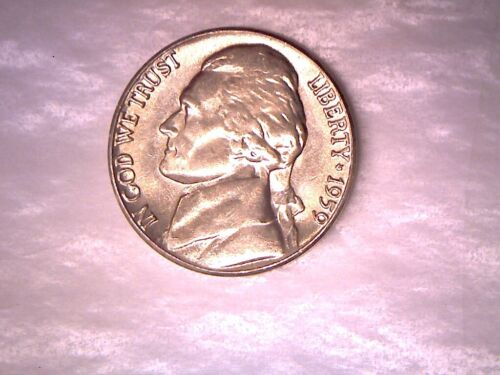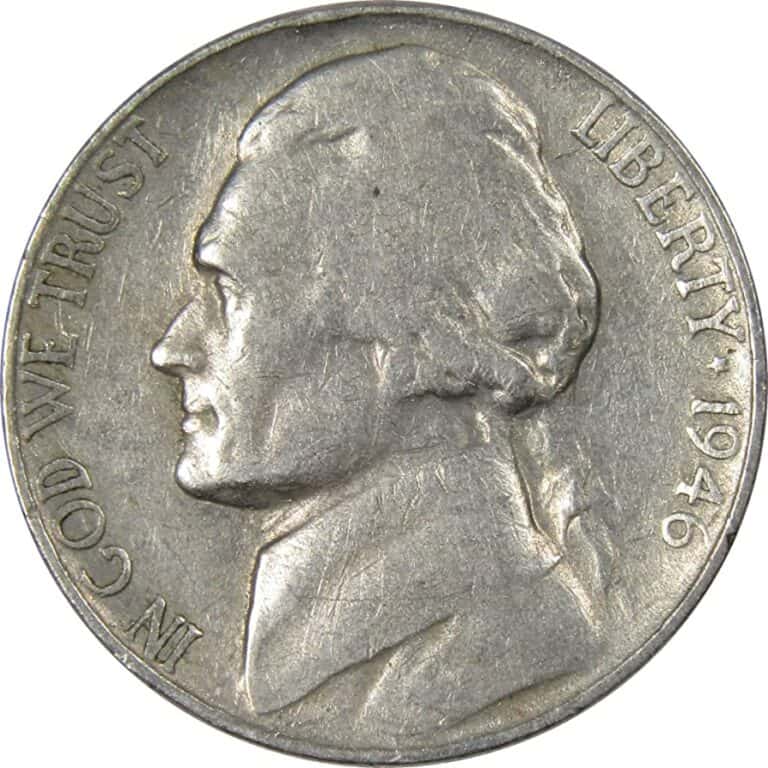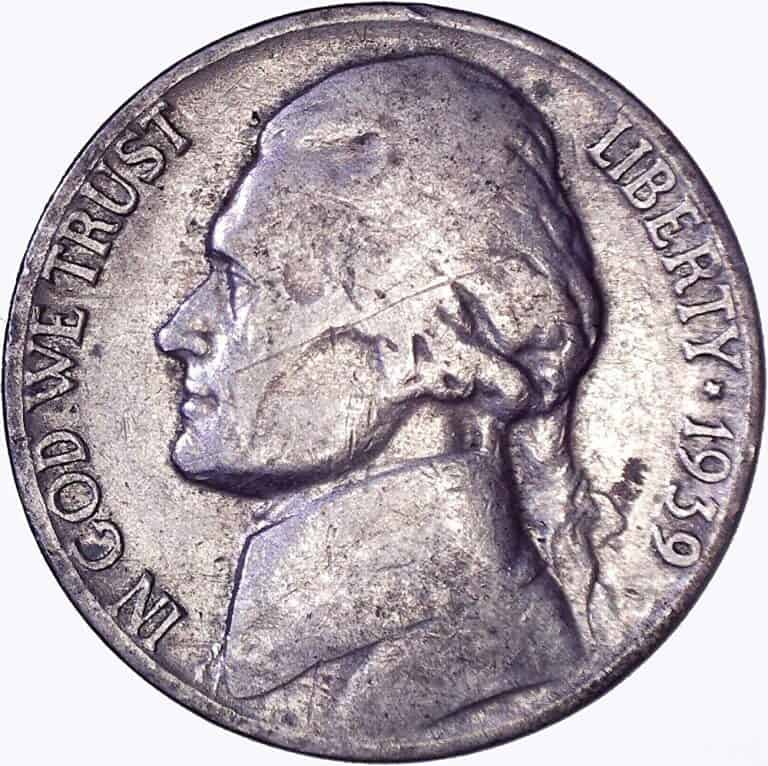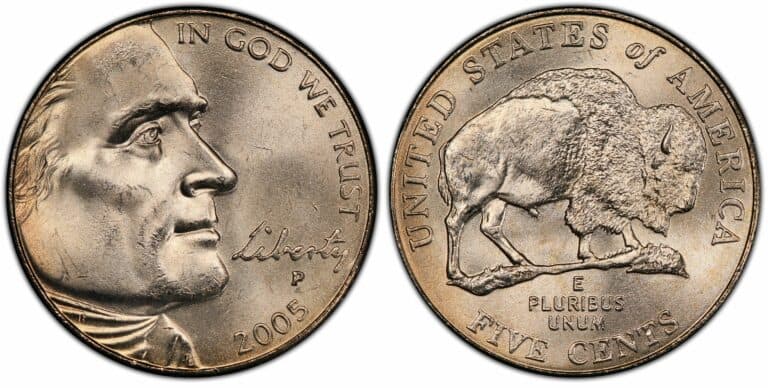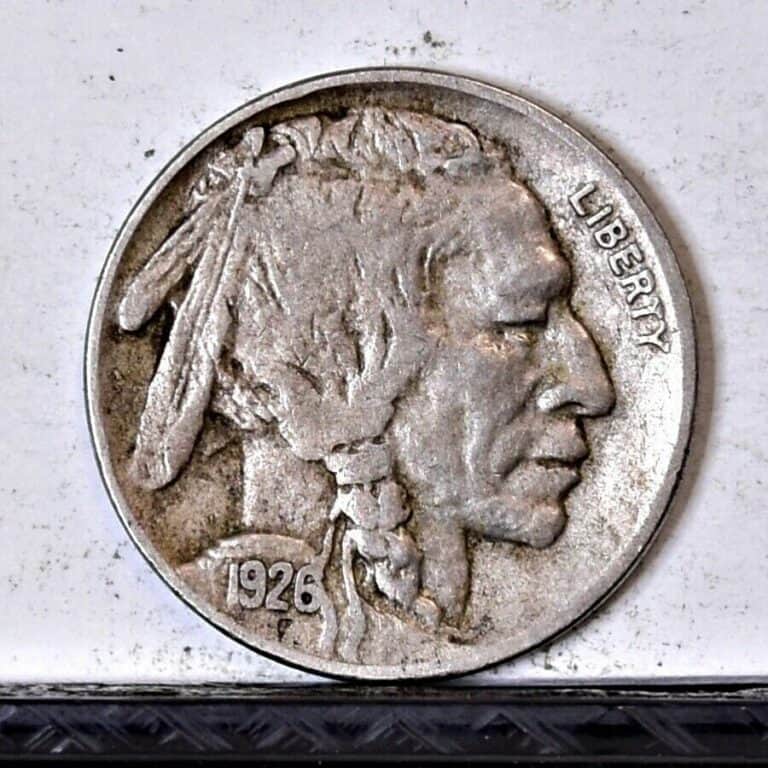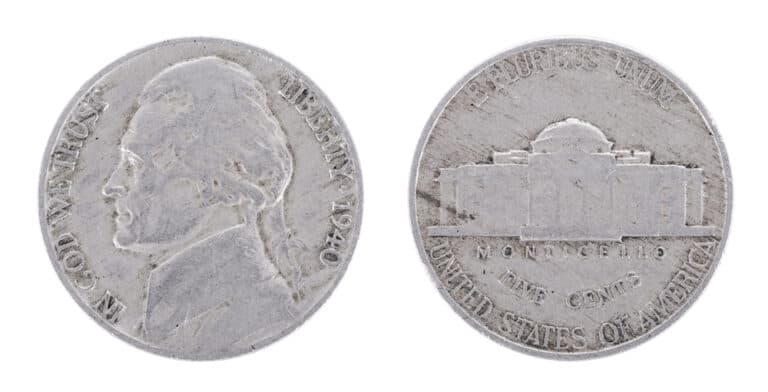1965 Nickel Value: How Much Is It Worth Today?

Jefferson nickels were in production for over six decades – ever since they replaced the Buffalo nickel in 1938 all the way until 2004. This makes them one of the more long-lasting US coins and it also means that there were a lot of these coins in circulation for quite some time.
What’s more, the Jefferson nickel has undergone quite a few changes during all those years, in both its meta composition at times as well as its markings. One such prime example is the 1965 nickel which was minted with no mint marks in an effort to discourage coin collecting. This practice continued for a couple more years before it was suspended because it didn’t really work.
So, does this mean that the 1965 nickel is more valuable or less valuable compared to other nickels? Let’s find out below.
1965 Nickel Value Chart |
||||
| Mint mark | Good | Fine | Extremely Fine | Uncirculated |
| 1965 No Mint Mark Nickel Regular Strike Value | $0.10 to $0.25 | $0.35 to $1 | $1.50 to $5 | $15 to $1,450 and above |
| 1965 No Mint Mark Nickel Special Mint Set Value | n/a | $4 to $6 | $7 to $300 | $12 to $2,000 and above |
1965 saw the production of two main variations of the Jefferson nickel, both with no mint marks. Even though this lack of mint marks was done to discourage coin collectors, as you can see from the value chart above, both types of coins are actually valued quite highly by collectors today.
Granted, we don’t know of any 1965 nickels that have been valued in the millions as is the case with some rare coins, but there are examples of 1965 nickels being sold for thousands and even tens of thousands of dollars – quite a good value for a coin with a face value of just $0.05.
1965 No Mint Mark Nickel Regular Strike Value
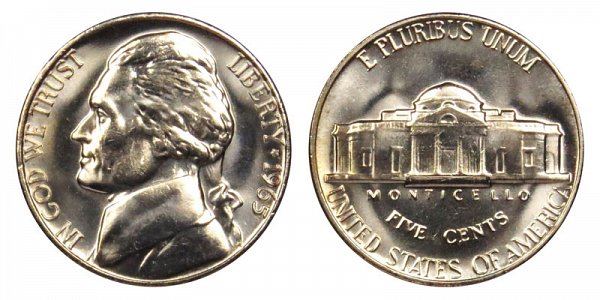
The first and most common type of 1965 nickel is the regular strike coin that was released in wide circulation. The US Mint made 133,771,380 such coins in 1965 – quite a respectable number but not nearly as many as the almost 3 billion nickels produced in 1964.
This makes the 1965 nickel relatively rare compared to other coins, both from 1964 and later years. Still, a mintage of over 133 million coins is nothing to sneeze at so nickels that made it into wide circulation and have gathered a bit of wear and tear – which is most of them – aren’t valued at much above their face value today.
Another factor that made this coin not quite as valuable and rare as it could have been in the fact that nothing else was changed about it other than the lack of a mint mark and the lower mintage number. The design of this coin is identical to its previous variations with both the obverse and the reverse designed by Felix Schlag for the 1938 version of the coin.
These coins are made of a cupronickel alloy (25% nickel plus 75% copper) covering a copper core. They are 21.21 mm wide, 5 grams heavy (0.1765 ounces), and 1.95 mm wide (0.077 inches). Their edges are plain.
The obverse features Jefferson’s profile, facing left toward the motto “In God we trust” that’s minted across the left edge of the coin. To the right, behind Jefferson’s head, are written the word “Liberty” and the date – 1965, in this case.
The reverse side is also familiar for anyone who’s seen a Jefferson nickel before – it includes Jefferson’s famous home, the Monticello with its name “Monticello” written right underneath. Above the building is the motto “E Pluribus Unum” (From many, one) that’s typical for most US coinage, and below it are the words “Five Cents” and “United States of America” further below.
Where you’d typically expect to see a mint mark – immediately to the right of the Monticello – there is none here, not on any of the 1965 nickels.
Even the lack of a mint mark isn’t all that unique given that the Philadelphia Mint didn’t use to put mint marks on their coins at that time anyway – it was only the Denver and San Francisco mints that used to put “D” and “S” mint marks but had briefly stopped doing that on nickels between 1965 and 1967.
All this means that 1965 nickel coins can be valuable but only if and when they have something extra going for them, as individual coins – when a particular coin has been kept away from wide circulation and is therefore in near-mint condition or when it has some interesting and unique additional features or manufacturing errors other 1965 nickels lack, for example.
In those cases, a 1965 nickel can indeed be quite valuable – up to a few hundred or even thousands of dollars. A price tag of about $1,450 is to be expected for a very well-preserved MS 67 nickel, for example, where “MS” stands for “mint state” and 67 refers to 1-to-70 grading scales such as the Sheldon coin grading scale.
If we consider the presence of certain rare errors or specifics too, the price of a 1965 nickel can rise even higher. Most notably, numismatists are always looking for nickels with the “Full Steps” variation – these are coins with such pristine strike quality that even the steps in front of the Monticello – the most delicate detail of this coin’s design – are perfectly visible, and distinct.
Such a “full steps” or FS mint state 1965 nickel can easily be valued over $10,000 and up to $16,000.
1965 No Mint Mark Nickel Special Mint Set Value
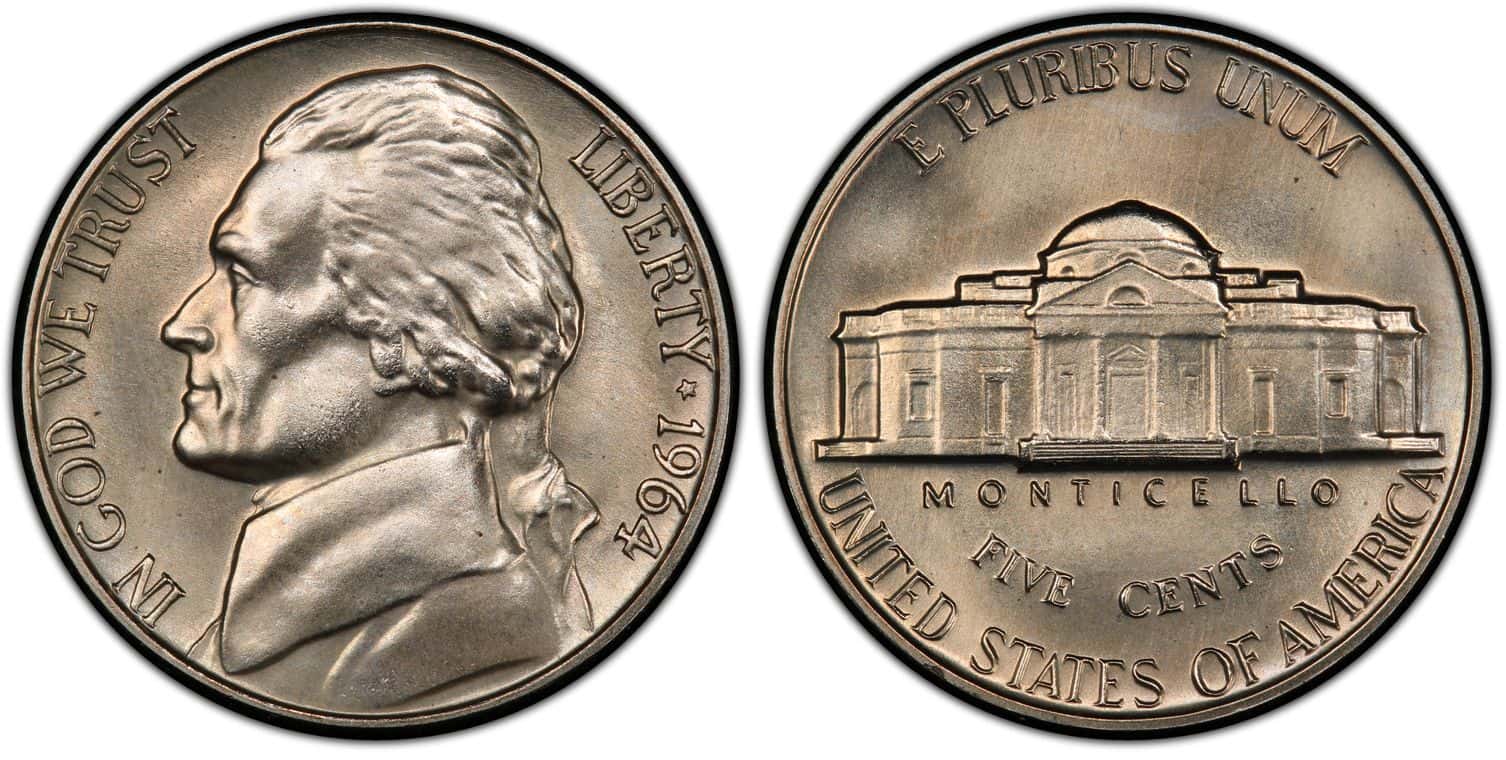
The second 1965 variant of this coin is the SMS nickel, i.e. the “Special Mint Set” nickel. This SMS variant was the US Mint’s alternative to the proof coins that had been used in previous years (and kept getting used in the future). Essentially, because proof coins were overly expensive to make, the US Mint wanted a different “special” set that still sold well to collectors but didn’t cost as much to make.
By most accounts, the Special Mint Set wasn’t the answer the US Mint was looking for, hence why SMS coins were discontinued soon after.
The idea behind them seemed sound at the time, however – the US Mint had always needed and used “special” variations of their ordinary coins. They needed them for display purposes, as proofs against counterfeits, and to sell to collectors for profits.
Proof coins were the go-to as they were made to be of significantly higher quality than ordinary coins. To achieve that, the minting dies for proof coins were pickled in acid and hand-polished to create a pristine mirror-like polish for high-quality minting.
Special Mint Set minting dies also had to undergo a similar process but not quite as refined and therefore more affordable for the US Mint to achieve. That way, the Mint hoped to cut costs while still offering collectors a special collectible set that was better than the ordinary coins and would, therefore, command a higher price.
So, the Mint produced 2,360,000 SMS coins in 1965. And, for the most part, the SMS was technically successful in that. The average value of Special Mint Set 1965 nickels is higher than that of regular strike nickels of similar quality. A value comparison between an SMS 1965 nickel and almost any similar regular-strike 1965 nickel should go in favor of the SMS coin.
The problem is that the difference just isn’t all that significant, considering how much more expensive SMS coins are to produce. So, while collectors bought them from the Mint and are trading with them, sometimes for 4-digit prices, these coins just aren’t seen as all that “special” compared to high-quality regular-strike nickels.
To be fair, this is something that’s often the case with proof coins from other years too. The crux of the matter is that while a mintage of 2-3 million per year for proof/SMS coins is significantly lower than the mintage of hundreds of million regular-strike coins, most of the regular-strike coins go into mass circulation and aren’t of interest to collectors anyway.
So, while such circulated coins bring down the averages for regular-strike nickels, the rare uncirculated nickels are so rare and sought-after by collectors that they grossly overshadow the 2-3 million proof/SMS coins.
Does this mean that 1965 SMS nickels aren’t worth your attention? Not at all. Such coins are still considered viable collector’s options, especially for newer numismatists who are looking for affordable coins to kickstart their collections with. However, if you’re hoping that a 1965 SMS nickel will be worth an astronomical sum in a few years’ time, that’s unlikely.
1965 Nickel Grading
Grading a 1965 nickel is done in much the same way as with any other coin. After establishing the year and mintage of the coin, the first major factor is assessing its quality through a visual examination.
This is quite simple to do but it still requires an expert’s eye. Essentially – the more details are preserved in the coin’s design, the higher its quality grade will be. Here is a good video on grading 1965 nickels, if you want a more visual demonstration.
Lists of 1965 Nickel Errors
The last significant factor contributing to a coin’s value is the presence or lack of any manufacturing errors. Such errors may sound like something negative, but they are actually very sought-after by numismatists because they can make a coin much more unique than it otherwise would be.
Do keep in mind that not all errors are created equal – while pretty much all of them make coins rarer, some make them so unappealing, uninteresting, or unrecognizable, that they just aren’t valued by collectors. So, the manufacturing errors that actually contribute positively to a coin’s value are the ones that also look cool, or, at least, appear interesting.
1965 Nickel Full Steps Variation
We are cheating a bit as this isn’t technically an error but it’s often mentioned in the same breath as coin errors because of how rare and unique it is. Essentially, full steps nickels or FS coins are those that have been stricken so cleanly that the full steps of the Monticello building on the reverse side of the nickel are fully visible. Such coins, both SMS and regular-strike, are so extraordinary and gorgeous that they always command very high prices.

1965 Nickel Double Die Error
The double die error can be seen in many coins and the 1965 nickel is no exception. This error is what happens when the coin’s metal planchet has shifted slightly in between the two strikes of the minting die. When this happens, the design on one or both sides of the coins gets slightly blurry or distorted because one of the die’s hits hasn’t been centered properly. This can look quite neat and can increase the coin’s price by a fair bit.
1965 Nickel Off-Center Error
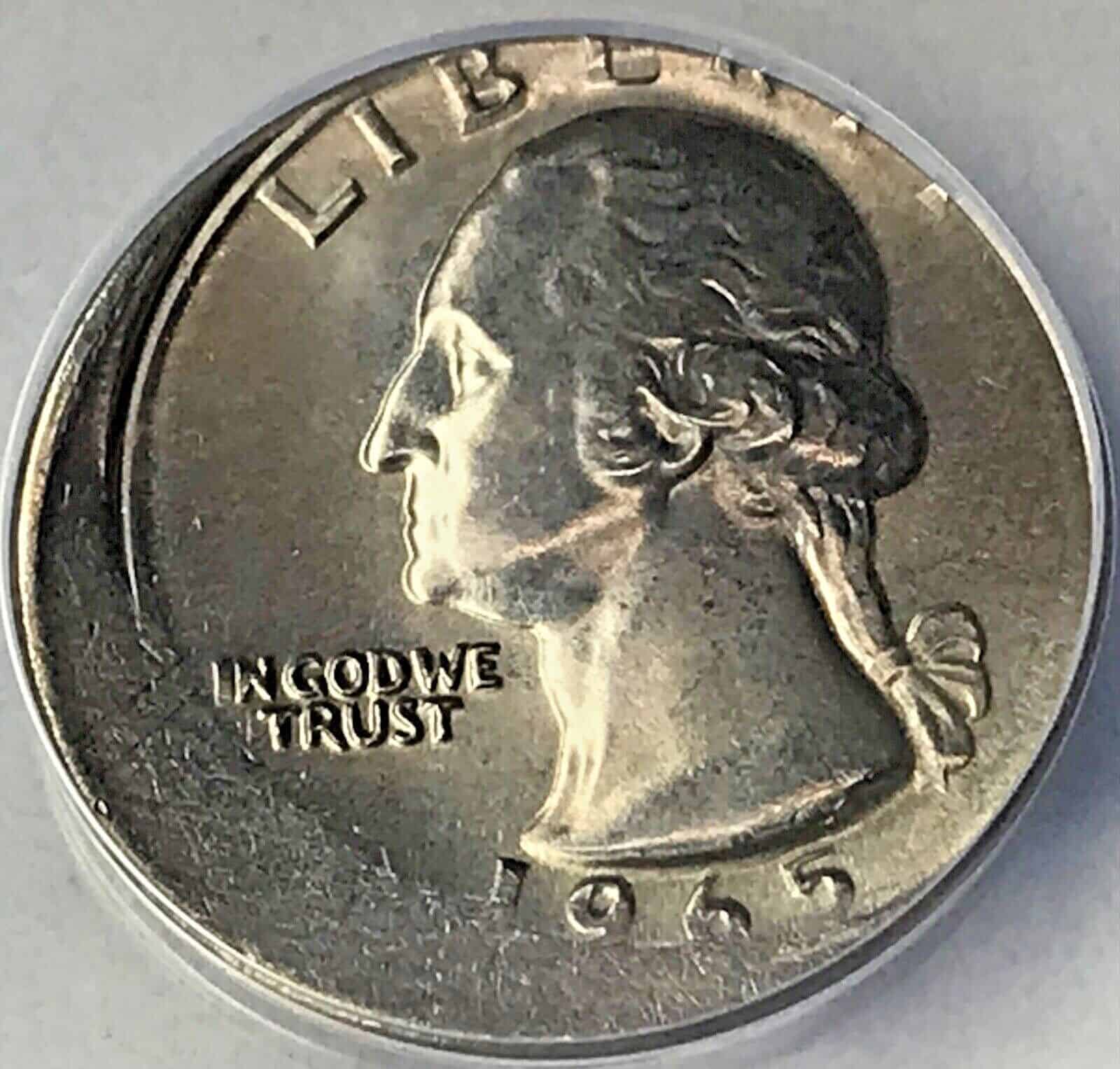
This error is not dissimilar to the double die error – the only difference is that, here, the coin’s planchet has shifted before the first strike of the minting die and not between the first and the second strikes. So, the design on the coin won’t be blurry but it will be somewhat off-centered. As long as the whole design is still visible on the planchet, an off-center error can also be quite valuable.
1965 Nickel FAQ
What is special about the 1965 nickel?
The two main things about this coin are that the US Mint had briefly paused the use of mint marks on their nickels between 1965 and 1967 in an effort to discourage coin collectors. The other thing is that the Mint had switched away from making proof coins in favor of the similar but lower-quality “Special Mint Set”. Neither of these changes made all that much of a difference, however, and were soon reversed.
Are 1965 nickels worth keeping?
Some are but most aren’t. As with any other coin, you want to look for nickels that are of near-mint-state visual quality, i.e. that haven’t been in wide circulation. Next, you’d want to be on the lookout for coins with certain rare manufacturing errors or peculiarities such as the double die error or the rare full steps variant.
